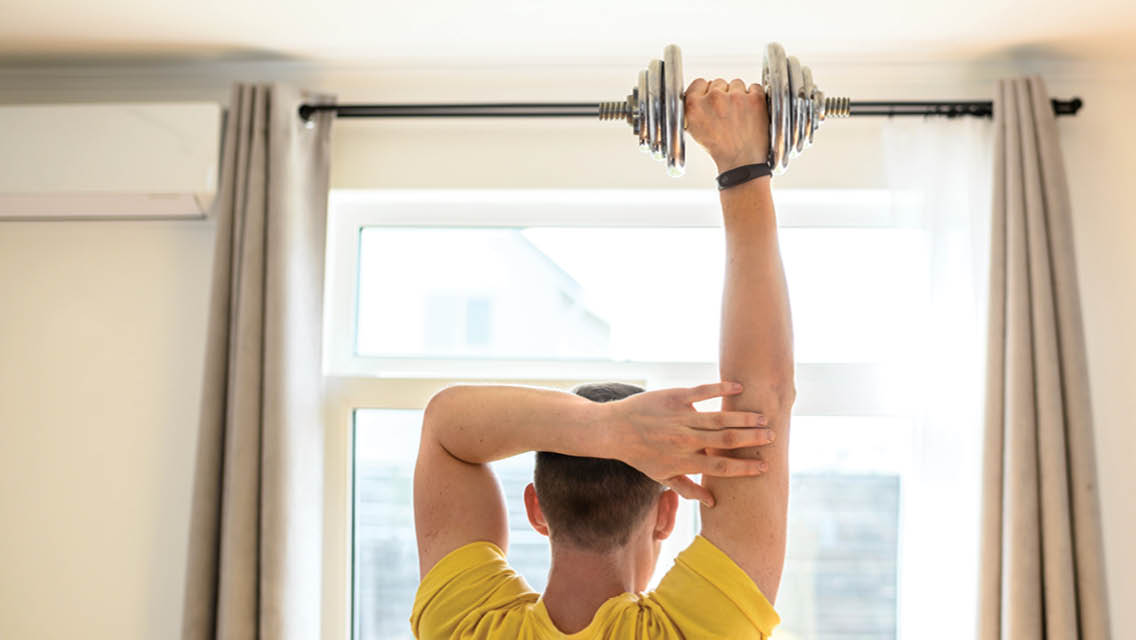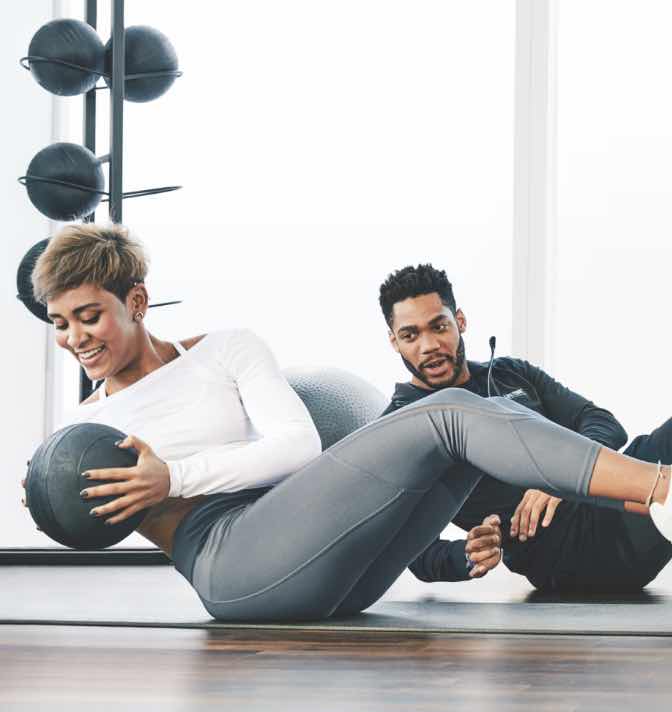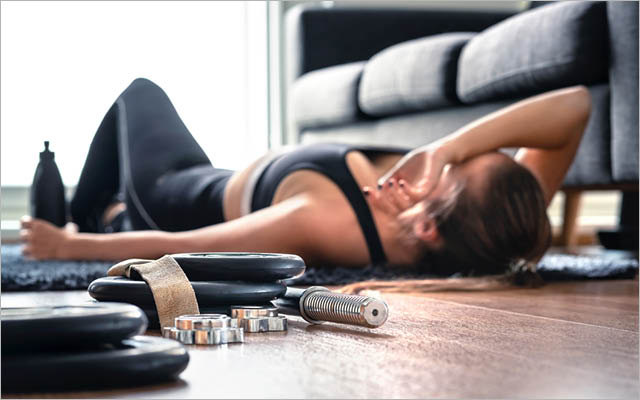Consistency, as the saying goes, is the key to progress. But there’s a flip side to that fitness tip: Too much consistency doing the same exact thing can lead to stagnation. What was once novel, fun, and challenging becomes repetitive. Progress stalls. Motivation flags. Injuries arise.
The fix is something called periodization.
Don’t let the technical-sounding name deter you. “Periodization is just planned variation,” says Life Time master trainer Danny King. “You’re changing things up just enough to make sure you keep getting better over time.”
Properly executed, periodization minimizes fitness plateaus — and keeps your workout routine fun, safe, and effective.
Periodization Principles
Exercise is a stressor. Even though its effects are overwhelmingly positive, too much can wear you down. The physiological changes that occur as our bodies respond to stress follow a predictable, three-phase pattern, identified as the general adaptation syndrome in 1936 by endocrinologist Hans Selye.
- Alarm: At first, your body enters an alarm state. Blood pressure, heart rate, and stress hormones increase.
- Resistance: Second, your body strives to repair itself and adapts to the stress. Muscles grow, heart and lungs strengthen, and stress hormones stabilize.
- Exhaustion: If the stress continues unabated, you become exhausted. Fatigue becomes chronic, your mood tanks, and anxiety and tension soar.
Cycling between alarm and resistance is a cornerstone of improving fitness. And the goal of a periodized program is to keep you squarely in those first two phases. Apply escalating levels of stress, gradually get better, and then change the stress before you become exhausted or injured.
Periodization in Action
Many exercisers first encounter the concept of periodization in strength training. That’s because the best strength programs, regardless of what tools they use, are periodized to account for the various phases of musculoskeletal development while protecting against overtraining and injury. Periodization typically focuses on three major training phases.
- Endurance: The ability to perform work for long periods.
- Hypertrophy: The growth of muscle.
- Strength: The ability to exert high amounts of force.
This chart shows how each phase translates to sets, reps, load, and rest:
| Phase | Sets | Reps | Weight | Rest between sets |
| Endurance | 2–3 | 15–20 | Light | Brief (30–45 seconds) |
| Hypertrophy | 3–4 | 8–12 | Medium | Medium (45–90 seconds) |
| Strength | 4–5 | 3–6 | Heavy | Long (90–180 seconds) |
Following this program over the course of three months, you gradually work through the endurance, hypertrophy, and strength phases: You incrementally increase the weight you use on each exercise while also increasing the number of sets — but reducing the number of reps — on each of those moves.
- At the start of month one, you might perform standing dumbbell presses with 12-pound dumbbells for sets of 15 reps. Work hard during that endurance-focused month, and four weeks later, you might be pressing 15-pound dumbbells for sets of 20 reps.
- In month two, you’d increase the weight — say, to 20 pounds — and press for eight reps to focus on hypertrophy. Four weeks later, you might be up to 25-pound dumbbells for 12 reps.
- At the start of month three, you’d increase the weight again — perhaps to 30 or 35 pounds — and press for three or four reps to really emphasize the strength phase.
- By the time you circle back to the month-one scheme, you’ll almost certainly be training endurance with heavier weights than the last time.
“Focus on working hard in the right rep ranges,” suggests King. As you progress through each month, keep track of the weights you use and the reps you perform on major lifts in a small notebook or workout app.
Athletes typically schedule their training around important competitive events; they plan ahead so these events follow the strength phase. If you’re not competing in an event, it might be nice to schedule your training so you finish the strength phase of each three-month block before a natural break, like a vacation.
Even if you’re staying home, take a recovery break of about a week before starting another endurance phase.
Periodization for All
“Anything you can quantify you can periodize,” says King. In other words, periodization isn’t just for weightlifters. Runners, swimmers, and cyclists can follow a similar pattern by doing more long-distance work in the endurance phase; more middle-distance work in a hypertrophy phase; and more explosive, short-distance work in a strength phase.
Another powerful periodization trick is to add in cross-training. You might follow a schedule in which you cross-train by focusing your energies on sports or activities that challenge your body in different ways, depending on the time of year.
If you’re into sports, you might try something more aerobic, like trail running or mountain biking, in an endurance phase; something requiring more strength, like basketball, in a hypertrophy phase; and a stop-start sport, like squash or tennis, in a strength phase.
Or you might do an indoor activity, like martial arts, when it’s cold, and an outdoor one, like rock climbing, when it’s warmer.
As long as you’re changing things up regularly before you get bored or injured, you’re practicing a form of periodization. (For more on cross-training, see “6 Cross-Training Activities to Try“.)
Though it requires a smidgen more attention than the freewheeling approach, the extra effort is well worth it.
“With periodization, you’re thinking about performance instead of relying on the scale for feedback,” says King. “That makes you train harder, stay more consistent, and make better progress.”
This article originally appeared as “Periodization Training 101” in the December 2022 issue of Experience Life.






This Post Has 0 Comments